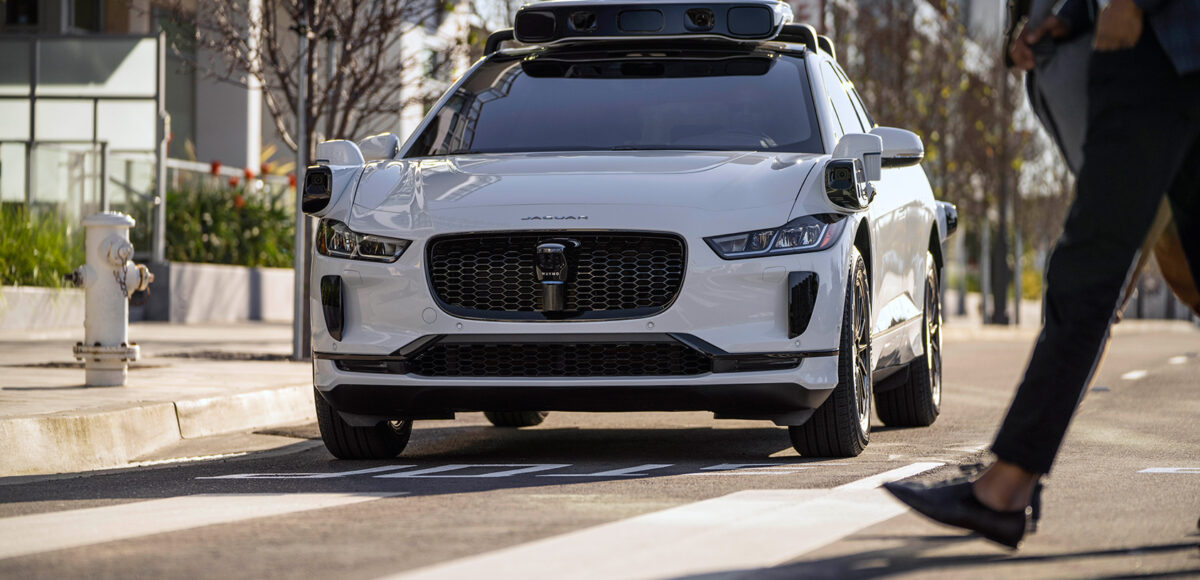Like jetpacks and space tourism, self-driving cars were once the stuff of an imagined far-away future. Not anymore. After an August expansion of its services, Beverly Hills residents can now travel in Waymo’s self-driving cars across 79 miles of greater Los Angeles, from the Santa Monica Pier to the edge of downtown.
In Beverly Hills, the service is available everywhere south of Santa Monica Boulevard, but Product Manager Nick Rose said that the company expands its coverage based on user feedback and where people are traveling most.
Last week, Vice Mayor Sharona Nazarian caught a ride in one of the service’s autonomous vehicles—white Jaguars recognizable by the cone-shaped cameras attached to the roof. Though Nazarian was weary when she first got in, the trip felt so safe she almost forgot there was no one behind the wheel.
“It was incredible,” Nazarian said. “It was a fantastic experience, and I think it’ll help solve a lot of the concerns that we have regarding … the Metro coming and assisting our residents with their transportation needs.”
Although the technology has only recently taken off in Los Angeles, the Beverly Hills City Council has supported its growth for years. The council unanimously adopted a resolution in support of driverless vehicles in 2016, and last month, Mayor Lester Friedman sent a letter to state representatives in favor of SB 915, a law that seeks to empower local governments to regulate autonomous vehicle services like Waymo.
While Friedman noted that these services could bring immense benefits to cities, they must be responsibly managed to ensure the safety of all road users. To that end, SB 915 mandates that autonomous vehicle services can be overridden by first responders and allows cities to establish a permitting program including a cap on vehicle numbers and fare disclosure.
“These measures are vital for maintaining public confidence in the safety and reliability of autonomous vehicle services,” Friedman stated. “They provide the necessary tools for cities to protect their residents while fostering the growth of innovative transportation solutions.”
As an emerging field of technology, self-driving cars have not been incident free. In June, Waymo voluntarily recalled its mapping software in 672 vehicles after a car crashed into a utility pole, according to a National Highway Traffic Safety Administration (NHTSA) report. The report stated that a software update remedied the problem.
And on Aug. 22, Cruise, a General Motors’ robotaxi service, recalled almost 1,200 vehicles following a two-year NHTSA investigation that found the service was involved in 10 crashes, four resulting in injuries, according to news reports.
But in an interview, Rose told the Courier that safety was Waymo’s chief priority.
“We have a number of research papers … backing up that already, the Waymo driver is avoiding collisions better than even an always attentive human driver,” Rose said, adding that people can find more information at Waymo.com/safety. “It’s quite clear from the time that the car starts driving that this is a very safe experience.”
Waymo spokeswoman Anjelica Price-Rocha added that with its fully electric fleet, Waymo helps greater LA accomplish the climate goals set by state and local leaders over the next few years, including that all new cars sold by 2035 be zero-emission.
“Part of the reason we decided to go for a ride-hail service model is that so more people can have access to shared, electrified transportation,” Price-Rocha said. “We really firmly believe that this is one way in which we can help to decarbonize as much as we can in the cities in which we operate.”







